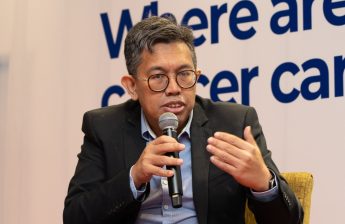KUALA LUMPUR, Feb 27 – The Ministry of Health (MOH) is improving standard operating procedure (SOP) on cardiopulmonary resuscitation (CPR) intervention provided by public ambulances, Lukanisman Awang Sauni said today.
The deputy health minister was responding to Ipoh Timor MP Howard Lee Chuan How in Parliament, who asked whether MOH has a policy that allows for the withholding of CPR by emergency medical services in emergency cases where the ambulance arrives on site beyond 15 minutes from the emergency call.
Lee referenced the April 2022 case of Kumaraveloo Terpari @ Thirupathy, also known as Cikgu Kumar, a St Michael school teacher who died at age 43 from a heart attack after he collapsed during a traffic jam in Ipoh, Perak, in front of eyewitnesses.
In that case, an ambulance from Raja Permaisuri Bainun Hospital (HRPB) arrived within 10 to 15 minutes from the emergency call, but the paramedic withheld CPR intervention, claiming in his prehospital care form that Kumaraveloo had algor mortis (body turned cold), a “clear sign of death”.
“In relation to what Ipoh Timor questioned about the provision of CPR intervention, the MOH is improving the SOP to the best to avoid a repeat of past incidents, and we will also ensure that ambulance services arrive for a case as per the set SOP,” Lukanisman said during Question Time in the Dewan Rakyat.
Health Minister Dr Zaliha Mustafa, in a written parliamentary reply to Lee last February 21, revealed that only between 28 per cent and 42 per cent of MOH ambulance arrivals from 2016 to 2022 nationwide met the target of 15 minutes or under for critical emergency cases.
This means that between six and seven in 10 critical emergency cases do not receive ambulance services within 15 minutes.
Lukanisman said today that MOH also works with non-governmental organisations like the Malaysian Red Crescent Society and St John Ambulance of Malaysia to place ambulances in strategic locations.
Lee also asked the deputy health minister on the outcome of the inquiry into Kumaraveloo’s case.
Under then-Health Minister Khairy Jamaluddin, an independent inquiry, comprising emergency, forensics, and cardiology experts from public hospitals outside HRPB and led by the head of Ampang Hospital’s emergency department head, held a a one-day investigation on July 14 last year into Kumaraveloo’s case. Khairy did not inform the public about the results of the inquiry.
“The case is still under investigation and we are awaiting answers from the investigation,” Lukanisman told Parliament today.
Tanjong Karang MP Dr Zulkafperi Hanapi, referring to Lee’s question, noted that emergency medical services are typically staffed by paramedics trained in CPR intervention.
“So, what is the justification for this question that states the ambulance, with a driver and paramedic, withheld CPR, unless the patient was confirmed to have truly died, then only CPR can be withheld,” Dr Zulkafperi said.
Lukanisman, who is also Sibuti MP, told Lee that MOH does not have statistics on the number of deaths from out-of-hospital cardiac arrest (OCHA) cases.
Lee had asked in Parliament for mortality in OCHA cases on a monthly basis from January 2013 to December 2022 in which MOH ambulance services withheld CPR intervention.
“MOH only monitors monthly mortality for heart attack cases in MOH facilities,” Lukanisman replied.
He, however, added that MOH is currently participating in a Pan Asian Resuscitation Outcomes Study (Paros) Clinical Research Network.
“This collaboration is aimed at improving the emergency medical service and life span of out-of-hospital cardiac arrest (OCHA) cases in the Asia Pacific region. This is implemented by collecting baseline information on the prevalence, treatment, and outcome of OCHA cases in this region to enable MOH to act more efficiently and objectively to handle such cases in future.”







